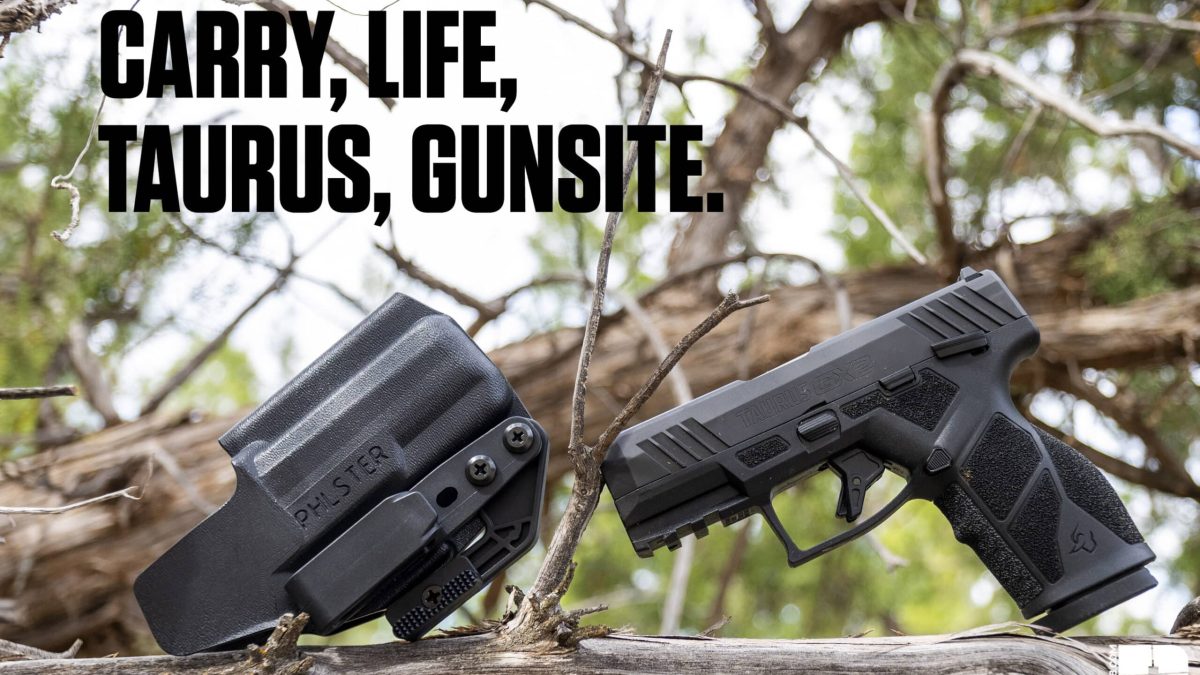Carry, Life, Taurus, Gunsite
Brazil-based Taurus first got their start back in 1939 producing machine parts. They got into guns in 1941, heavily focusing on the American market starting in the 1970s. With a long reputation of questionable quality, a real, tangible shift started when Taurus moved their American headquarters from Miami, Florida, to Bainbridge, Georgia, in 2019. It wasn’t just a change of location but also of leadership; new machines came online and older designs refined.
While Taurus is certainly best known for their revolvers, one of their main modern efforts is the GX4 series of semi-automatic pistols. First released in 2021 as a budget-minded response to the SIG P365, the GX4 is a polymer-bodied, stagger-stack 9mm. In the intervening years, Taurus has put particular focus on maturing this product line, and now there are several variations with different features and capacities like the GX4 TORO, GX4XL, and GX4 Carry (see Issue 24 for more).
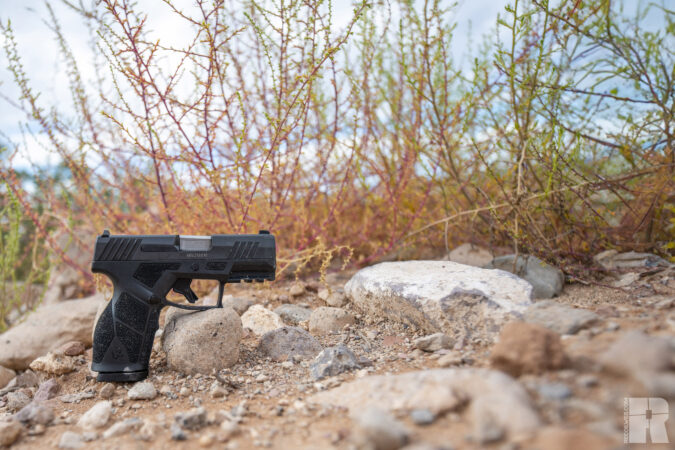
The spiritual concealed carry precursor was the Taurus G2c (see CONCEALMENT Issue 13), an inexpensive pistol that remains popular because it can often be found around $200. There are more than a million G2c’s currently in circulation, but being released in the early teens means it’s grown long in the tooth, so Taurus set out to replace it. Which brings us to the subject of this article: the Taurus GX2.
DESIGN DETAILS
You can safely think of the new GX2 as a baby between the legacy G2c and the GX4 — it’s essentially a simplified GX4 intended to take over the role of the G2c for primary carry. And as you’d expect from a pistol designed a decade later, the GX2 has the G2c beat in most ways.
Firstly, the GX2 was made to be a shootable concealed carry pistol — this is decidedly different than so many others that are designed solely with concealment in mind. Small guns are easy to stash away, but when it comes to actually shooting them, they’re found lacking. (See John Correia’s “Making Pocket-Sized Pistols Suck Less” in CONCEALMENT Issue 20).
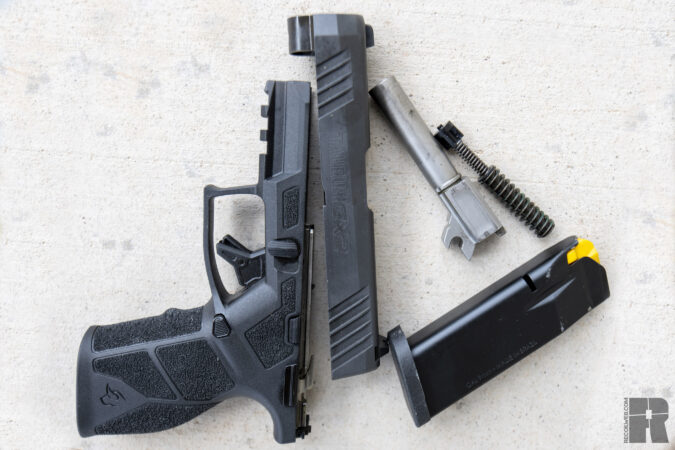
Like all thoughtful 21st century pistols, at least those that came after the SIG P320, the GX2 is a chassis gun. In fact, the GX2 shares a chassis with the GX4. While we haven’t exactly seen a boatload of aftermarket add-ons, it’s foolish not to future-proof and leave the door open for possibility.
While the grip doesn’t have interchangeable backstraps like the GX4, it is sufficiently grippy. There are integral textured pads perfectly placed for stacked thumbs and straight trigger fingers. There’s an honest-to-goodness Picatinny rail up front that will accommodate popular subcompact lights. The safety isn’t ambidextrous but it meets the minimum of being both unobtrusive while remaining easy to hit.
The slide has serrations aggressive enough to leave some skin behind, both at the rear for normal use and at the front for those who like to live life more dangerously.
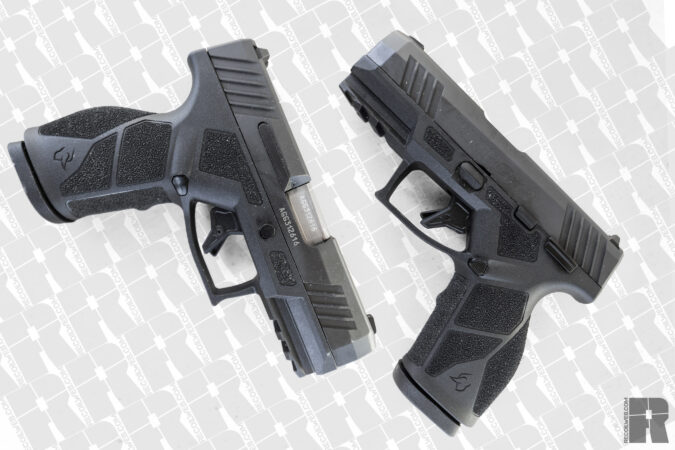
Something that invariably draws groans and eye rolls among us are modern pistols produced that aren’t ready for an optic. It comes off like a cheap trick in order to sell the same gun several times — companies wait six months to a year, add a hundred bucks, and then you’ll get an optic plate option. Threaded barrel? Wait another six months to a year after that release, add another hundred bucks … you get the idea. And admittedly, that was the knee-jerk reaction to first seeing the smooth-top slide of the GX2. Until we saw the price.
President and CEO of Taurus USA Bret Vorhees says, “We are solidifying ourselves as the entry-level option. Not everyone can afford a $700 pistol.”
It’s $310 if you’re paying sticker, which means absolutely under in most situations. A sub-$300 carry pistol doesn’t need to come equipped to carry an Aimpoint Acro P2, and the silencer and compensator crowd will be looking elsewhere too. While the GX2 doesn’t come ready for an optic, it does use what Taurus calls “industry standard sights” (read: Glock). The black rear is serrated to cut glare, and the front is a simple dot.
You might not get an optic mount, but what you do get at the sub-$300 price point is something that many say they don’t want: a manual safety. Ever since the advent of Glock, the tactical training tribe has decried most kinds of safety devices. But importantly, those types typically aren’t the ones buying inexpensive guns.
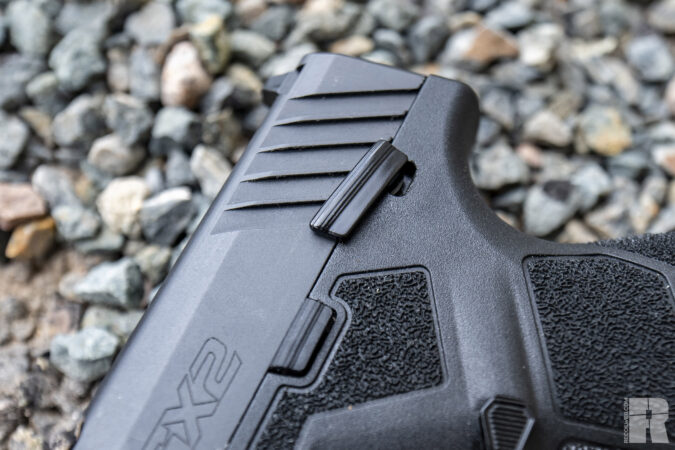
Market research shows that 80 percent of people purchasing at or near this price point want a manual safety, demonstrating a level of self-awareness not always seen among buyers. Just a little consideration goes a long way here, too. The people who are spending hundreds on holsters and thousands on training and ammunition are extremely unlikely to be picking up this pistol in the first place.
The standard, flush-fit magazine for the GX2 is a 13-round stagger-stack affair. While the GX2 uses the same magazine bodies as the GX4, the 13-round capacity means that they’re a little longer, so most GX4 mags don’t drop in. We’re told the longer 15-round GX4 Carry magazines are A-OK.
We’ve said before that Mec-Gar is a great example of doing one thing extremely well. And the thing they do extremely well is produce magazines. As such, Mec-Gar is the OEM magazine manufacturer for a great many big brands, Taurus among them. But with the GX2, Taurus decided to bring everything in-house. This process has been imperfect, however, with some issues detailed later in this piece.
GUNSITE
Located in Paulden, Arizona, about 70 miles from Sedona, sits Gunsite Academy. First founded back in 1976, Gunsite has been a training destination for nearly half a century. It was the brainchild of Jeff Cooper, a Marine combat veteran, prolific writer, teacher, and instructor.
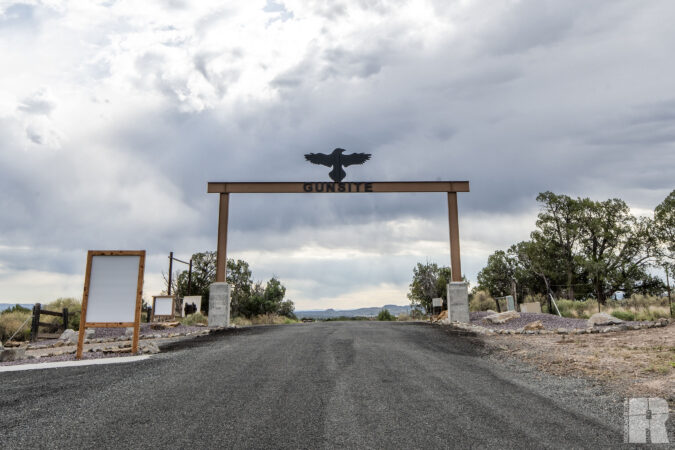
Much of modern training and gun-gaming can be directly tracked back to him. While not everything that Cooper decreed has stood the test of time, we can’t really expect it to either. After all, he was born in 1920 and fought in the Pacific theater of World War II followed by the Korean War — and because weapons, tactics, and gear constantly evolve, so does war and gunfighting. It’s the same reason why every great military tactician ends up being outdated and every economist ends up eating crow, at least if they live long enough.
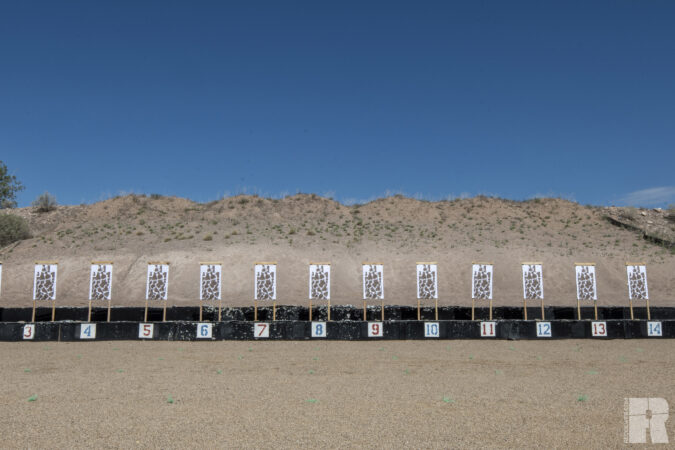
It seems to be human nature that if we make it to a certain age, no matter how smart or educated, we become less mentally flexible. With that in mind, I give Cooper the same grace I gave to my grandfather, who was lucky enough to reach a similar age.
There was a time when Gunsite was the butt of a joke among younger shooters. One of the “old man gun schools out west,” synonymous with fuddery, where unless you were running an iron-sighted 1911 chambered in by-God-.45ACP you were undoubtedly as good as dead in a gunfight. Nothing changes tactics and techniques more than war, and in the 21st century, America has had more than two decades of direct experience.
And thus, Gunsite Academy has been upgrading not only their 27 ranges across their sprawling 3,200-acre campus, but their course rubrics as well. And while sure, you’ll still see instructors with slabsides and wheelguns, there are a great many dotted Glocks among them. Not to say that there’s no Americana kitsch; each event kicks off with a hand on the heart for the Pledge of Allegiance, and you’ll definitely hear some tactical aphorisms.
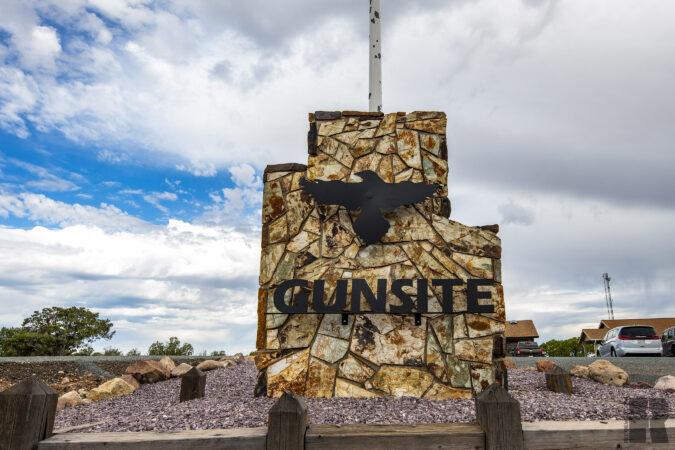
One of the ways Gunsite performs outreach to greet the wider community is by hosting gun manufacturers for their launch events. Range time and classes are taught by experienced instructors, to include the use of shoot houses and simulators. Lunches are good (the pesto chicken sandwich is excellent), and nearby Prescott is home to some exceptional hotels and restaurants.
We’ve had staff at several of these, and most of the gun companies end up repeat customers because Gunsite is an easy, turnkey choice. This would be the first time for Taurus, but undoubtedly not the last.
The altitude and attitude of northern Arizona are unforgiving. The alkaline sand combined with the hot sun and arid land makes for a tough training environment that really runs guns through the wringer — it’s far, far from a clean, climate-controlled indoor range. You might not get the same malfunctions in urban Atlanta or Algonquin, but you will in Afghanistan or Algeria.
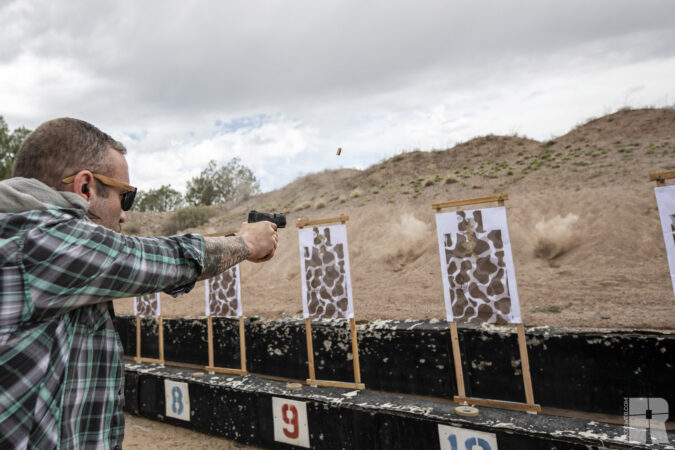
To wit: The new GX2 magazines did not like the grit. Everything was chugging fine until they were dropped in the sand several times, then followers intermittently stuck mid-mag. A baseplate or two was said to shift, though we didn’t directly experience the latter. To their credit, it was something Taurus employees immediately inspected and addressed, and our main question is which other media outlets will actually report any problems at all.
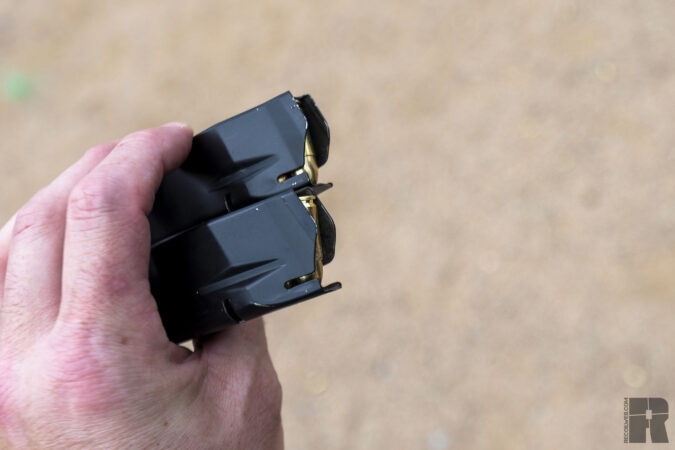
While Taurus has assured us they’re fixing the issue, even with the current magazines you’re unlikely to run into trouble — unless you’re operating in Algeria or cosplaying YouTube torture tests. The lesson here is to check your gear. Take the time to inspect your CCW after every range trip, and at least semiannually if it doesn’t leave the holster.
HOLSTERS & WARTS
Holsters are a typical issue with new releases, but Taurus was forward-thinking here. Right out of the gate, you can get a PHLster intended for appendix carry or the convertible UM Tactical Qualifier.
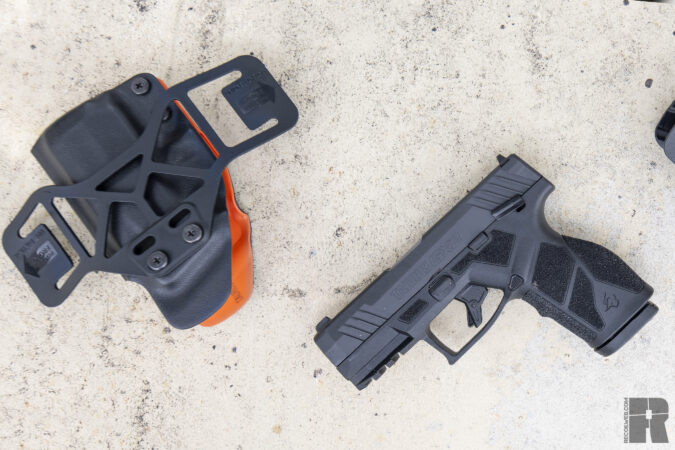
As expected from the entry-level market, the GX2 has some blemishes. The trigger has a wide face, complete with the Glock-style dingus drop-safety. It’s fat and a bit unforgiving — more functional than fun. There are good striker triggers and there are safe striker triggers. This one biases toward the safety end of the curve. Certainly shootable.
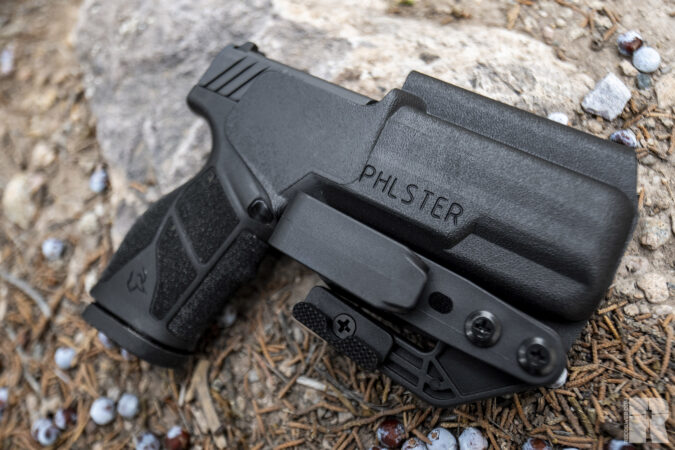
The GX2 suffers from the same problems all diminutive striker guns do, in that the slide has to be stroked aggressively when chambering. Those with reduced hand strength may do well to look elsewhere, or at minimum try before you buy.
The aforementioned safety is currently right-hand only. While it’s unobtrusive if you want to forgo it, the slim style makes it harder to hit for those with smaller hands. If you fall into that camp, the suggestion would be to try using the thumb of your support hand rather than the shooting one. Or maybe just Dremel it and call it a day.
The sights are just alright. While the GX2 isn’t setup for optics, that Glock dovetail gives you some additional options if you want to go through the trouble or troll your friends. You could use an adapter from the likes of Dueck Defense, Strike Industries, or OuterImpact. You could use an optic meant for Glock dovetails like a Meprolight microRDS or Leupold DeltaPoint Micro. You could, for reasons only known by yourself and God, have it milled by a machine shop. But the reality is that if you’re looking for a concealable Taurus ready for an optic, you’re probably going to be purchasing the GX4 TORO instead. And oh yeah, GX4 slides can ride on the GX2 frame, too.
LET’S TALK RECALLS
In mid 2023, Taurus issued a safety recall for a number of their GX4 pistols. While the internet is incredibly loud and snarky about recalls, the reality is there’s tangible disincentive to actually issuing them. Gun manufacturers are exempt from the Consumer Product Safety Commission, so any and all recalls are entirely voluntary. Liability lawsuits are still a thing, but companies that serve the lower end of the market are also less likely to see them. So, when you do see a recall, it’s a sign a company is being responsible.
There have been a number of wrongful death and liability lawsuits over the 80-year tenure of Taurus. We certainly can’t speak to their entire history of all their brands, but we can say that we’ve only seen increased accountability and better quality control than in the past.
Make the jokes you want about motivations, it’s absolutely better for us when companies do that. Respect, Taurus. You did the hard thing.
VALUE
The combination of premium design patents expiring, increased access to high-tech tools and techniques, and profit-by-volume production means that everything, absolutely everything, is getting objectively better with guns and gear. Our cheapest guns today are more reliable than the best of 20 years ago, with better prices by half. Per the inflation calculator from the U.S. Bureau of Labor Statistics, the MSRP of the GX2, $310, is the equivalent of about $174 in the year 2000. But if you wanted a reliable striker gun in that year, you were going to have to shell out more than double that amount.
And in terms of volume? Taurus factories produce an average of 9,000 guns a day. That’s an awful lot of affordable hardware.
Just as with televisions, the inexpensive ones are now really awesome, but the expensive ones are still better. That means there are some things you have to either find to be an acceptable compromise, or simply spend more money. With guns and televisions, in the future you will get more for less, if you’re willing to wait.
With the Taurus GX2, you have to be OK with the possibility the mag may gum up if you drop it regularly in sand. Also it’s totally workable left-handed but it’s not ambidextrous. Do you drop mags in sand? Do you train with your left hand? Well — if do, then you’re already our kind of people. Undoubtedly, you’re already carrying something you trust.
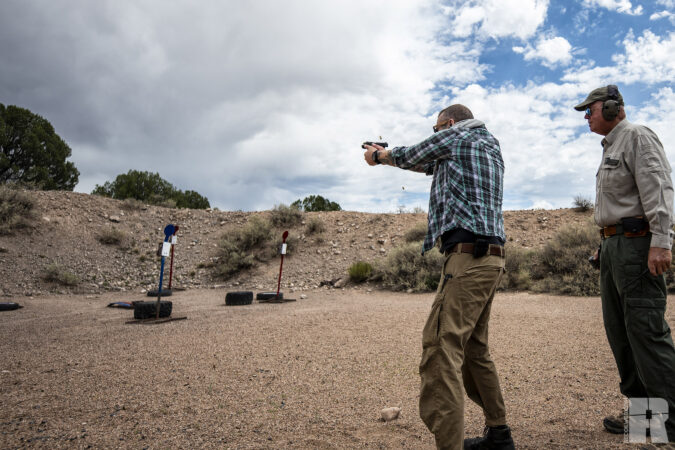
LOOSE ROUNDS
In a world where seemingly every company is clamoring to pop out the next “Glock-killer” or become bigger than SIG Sauer, it’s refreshing to see one understanding where they sit in the current market — and maximizing that place.
I can’t currently think of any better carry striker-gun at this price point, warts included (at least at the time of writing, September of 2024). Unless something goes batty in full production, like a weird material failure (there were hundreds of rounds through our guns, not thousands) this should be fine. Good, even.

Vorhees said that he wanted the Taurus GX2 to set a new standard at this price, and it has. Best of the worst? Hits outside its weight class? Call it a good one to recommend to a price-conscious friend.
The ante has been upped.
Read the full article here

